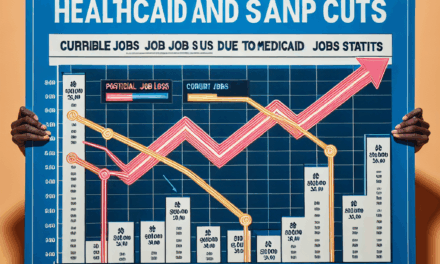Major Healthcare Policy Reforms Under the Trump Administration: Stay Updated
The Trump administration, which spanned from January 2017 to January 2021, was marked by significant changes in healthcare policy. These reforms aimed to reshape the American healthcare landscape, impacting millions of Americans. This article delves into the major healthcare policy reforms under the Trump administration, exploring their implications, successes, and challenges. We will cover five key areas: the Affordable Care Act (ACA), drug pricing reforms, mental health and addiction policies, healthcare access and rural health initiatives, and the COVID-19 pandemic response.
1. The Affordable Care Act: Repeal and Replace Efforts
The Affordable Care Act (ACA), enacted in 2010, was a cornerstone of President Obama’s healthcare policy. The Trump administration made it a priority to repeal and replace the ACA, which they argued was failing and leading to increased premiums and reduced choices for consumers. The efforts to dismantle the ACA were multifaceted and included legislative, executive, and judicial actions.
One of the most significant legislative attempts to repeal the ACA was the American Health Care Act (AHCA), introduced in March 2017. The AHCA aimed to eliminate the individual mandate, which required individuals to have health insurance or face a penalty. It also sought to cut Medicaid expansion and reduce subsidies for low-income individuals purchasing insurance through the ACA marketplaces. However, the AHCA faced significant opposition and ultimately failed to pass in the Senate.
Despite the legislative setbacks, the Trump administration took executive actions to undermine the ACA. For instance, the administration expanded short-term health plans, which were not required to meet ACA standards. These plans often provided limited coverage and could exclude individuals with pre-existing conditions. Additionally, the administration cut funding for ACA enrollment outreach and advertising, which contributed to a decline in enrollment numbers.
In December 2017, the Tax Cuts and Jobs Act was signed into law, effectively eliminating the individual mandate penalty starting in 2019. This move was seen as a significant blow to the ACA, as it removed the financial incentive for healthy individuals to enroll in insurance plans, potentially destabilizing the insurance markets.
In 2020, the Supreme Court heard a case challenging the constitutionality of the ACA, known as California v. Texas. The Trump administration supported the plaintiffs seeking to overturn the ACA. However, in June 2021, the Supreme Court ruled that the plaintiffs did not have standing to sue, effectively preserving the ACA. This ruling underscored the resilience of the ACA despite ongoing efforts to dismantle it.
- Legislative attempts: The American Health Care Act (AHCA) and its failure.
- Executive actions: Expansion of short-term health plans and cuts to enrollment funding.
- Tax Cuts and Jobs Act: Elimination of the individual mandate penalty.
- Supreme Court case: California v. Texas and its implications for the ACA.
- Impact on insurance markets: Enrollment trends and market stability.
2. Drug Pricing Reforms: A Focus on Affordability
One of the most pressing issues in American healthcare is the high cost of prescription drugs. During his presidency, Donald Trump made drug pricing a key focus, proposing several reforms aimed at reducing costs for consumers. The administration’s approach included both regulatory changes and initiatives to promote competition in the pharmaceutical market.
In May 2018, President Trump unveiled the “American Patients First” blueprint, which outlined a series of proposals to lower drug prices. Key components of this plan included increasing transparency in drug pricing, allowing pharmacists to disclose prices to consumers, and promoting the importation of cheaper drugs from other countries. The administration also aimed to eliminate the practice of “gag clauses,” which prevented pharmacists from informing patients about lower-cost alternatives.
One of the most controversial proposals was the idea of allowing Medicare to negotiate drug prices directly with pharmaceutical companies. While this proposal garnered significant support from the public, it faced strong opposition from the pharmaceutical industry and was not implemented during Trump’s presidency.
In 2020, the administration introduced the “Most Favored Nation” rule, which aimed to tie Medicare drug prices to the lowest prices paid by other countries. This rule was intended to ensure that American consumers were not paying more for drugs than patients in other developed nations. However, the rule faced legal challenges and was ultimately blocked by a federal judge in early 2021.
Despite these efforts, drug prices remained a contentious issue, with many Americans continuing to struggle with high out-of-pocket costs. The Trump administration’s focus on drug pricing highlighted the need for comprehensive reforms in the pharmaceutical industry, as well as the complexities involved in balancing innovation with affordability.
- American Patients First blueprint: Key proposals for lowering drug prices.
- Transparency initiatives: Gag clauses and pharmacist disclosures.
- Medicare negotiation: Public support vs. industry opposition.
- Most Favored Nation rule: Tying prices to international benchmarks.
- Ongoing challenges: The complexity of drug pricing reforms.
3. Mental Health and Addiction Policies: Addressing the Crisis
The opioid epidemic and mental health crisis have been significant public health challenges in the United States. The Trump administration recognized the urgency of these issues and implemented several policies aimed at addressing mental health and substance use disorders.
In October 2017, President Trump declared the opioid crisis a public health emergency, which allowed for the allocation of federal resources to combat the epidemic. The administration’s approach included increasing access to treatment, enhancing prevention efforts, and supporting law enforcement initiatives to combat drug trafficking.
One of the key legislative achievements was the SUPPORT for Patients and Communities Act, signed into law in October 2018. This comprehensive legislation aimed to improve access to treatment for substance use disorders, expand telehealth services, and promote the use of medication-assisted treatment (MAT). The law also included provisions to strengthen prescription drug monitoring programs and improve data sharing among states to track prescription drug use.
The administration also focused on mental health parity, ensuring that mental health services were covered by insurance plans on par with physical health services. The 21st Century Cures Act, enacted in 2016, laid the groundwork for these efforts by requiring insurers to provide equal coverage for mental health and substance use disorder treatment.
Despite these initiatives, challenges remained in addressing the stigma surrounding mental health and addiction. Many individuals still faced barriers to accessing care, including lack of insurance coverage, limited availability of treatment facilities, and societal stigma. The COVID-19 pandemic further exacerbated these issues, leading to increased rates of anxiety, depression, and substance use disorders.
- Public health emergency: The declaration and its implications.
- SUPPORT for Patients and Communities Act: Key provisions and impact.
- Mental health parity: Ensuring equal coverage for mental health services.
- Challenges in access: Barriers to treatment and societal stigma.
- Impact of COVID-19: The exacerbation of mental health and addiction issues.
4. Healthcare Access and Rural Health Initiatives
Access to healthcare remains a critical issue in the United States, particularly in rural areas where healthcare resources are often limited. The Trump administration implemented several initiatives aimed at improving healthcare access for rural populations, recognizing the unique challenges faced by these communities.
One of the key initiatives was the expansion of telehealth services, which gained significant traction during the COVID-19 pandemic. The administration relaxed regulations surrounding telehealth, allowing healthcare providers to offer virtual consultations and services more easily. This expansion was particularly beneficial for rural residents who often faced long travel distances to access care.
The administration also focused on strengthening rural healthcare infrastructure through programs like the Rural Health Care Services Outreach Program. This initiative aimed to enhance access to care by funding projects that addressed specific healthcare needs in rural communities, such as maternal and child health, chronic disease management, and mental health services.
In addition, the administration sought to address the shortage of healthcare providers in rural areas by promoting loan repayment programs for healthcare professionals who agreed to work in underserved communities. The National Health Service Corps (NHSC) expanded its efforts to recruit and retain healthcare providers in rural and underserved areas, helping to alleviate workforce shortages.
Despite these efforts, challenges remained in ensuring equitable access to healthcare for rural populations. Many rural areas continued to experience hospital closures, limited specialty care options, and disparities in health outcomes compared to urban counterparts. The COVID-19 pandemic further highlighted these disparities, as rural communities faced unique challenges in accessing testing, treatment, and vaccination services.
- Telehealth expansion: Regulatory changes and benefits for rural residents.
- Rural Health Care Services Outreach Program: Funding and impact.
- Workforce initiatives: Loan repayment programs for healthcare providers.
- Challenges in rural healthcare: Hospital closures and access disparities.
- COVID-19 impact: Unique challenges faced by rural communities.
5. COVID-19 Pandemic Response: A Defining Moment
The COVID-19 pandemic presented unprecedented challenges for the Trump administration and the American healthcare system. The administration’s response to the pandemic was a defining aspect of its healthcare policy, with significant implications for public health, healthcare access, and economic stability.
In January 2020, as the virus began to spread globally, the administration established the White House Coronavirus Task Force to coordinate the federal response. The task force included public health officials, scientists, and representatives from various federal agencies. However, the response was met with criticism for its perceived delays and mixed messaging regarding the severity of the virus.
One of the key initiatives was the development and distribution of vaccines through Operation Warp Speed, a public-private partnership aimed at accelerating vaccine development and distribution. The initiative successfully facilitated the rapid development of multiple COVID-19 vaccines, which received Emergency Use Authorization (EUA) from the Food and Drug Administration (FDA) in record time.
The administration also implemented various economic relief measures, including the Coronavirus Aid, Relief, and Economic Security (CARES) Act, which provided financial assistance to individuals, businesses, and healthcare providers. The act included provisions for expanded unemployment benefits, direct payments to individuals, and funding for hospitals and healthcare systems facing financial strain due to the pandemic.
Despite these efforts, the administration faced criticism for its handling of testing, contact tracing, and public health messaging. The decentralized nature of the U.S. healthcare system led to inconsistencies in state-level responses, with some states implementing strict measures while others opted for more lenient approaches. The pandemic also exposed existing disparities in healthcare access, particularly among marginalized communities disproportionately affected by COVID-19.
- Establishment of the White House Coronavirus Task Force: Coordination of the federal response.
- Operation Warp Speed: Accelerating vaccine development and distribution.
- CARES Act: Economic relief measures for individuals and healthcare providers.
- Criticism of the response: Testing, contact tracing, and public health messaging.
- Disparities in healthcare access: Impact on marginalized communities.
Conclusion
The Trump administration’s healthcare policy reforms were characterized by significant changes and challenges that shaped the American healthcare landscape. From efforts to repeal the Affordable Care Act to initiatives aimed at lowering drug prices and addressing mental health and addiction issues, the administration’s policies had far-reaching implications for millions of Americans.
While some reforms aimed to improve access to care, particularly in rural areas, challenges remained in ensuring equitable healthcare for all populations. The COVID-19 pandemic further highlighted existing disparities and underscored the need for comprehensive reforms in the healthcare system.
As we move forward, it is essential to stay updated on the evolving healthcare landscape and the ongoing discussions surrounding policy reforms. Understanding the successes and challenges of past administrations can inform future efforts to create a more equitable and effective healthcare system for all Americans.




